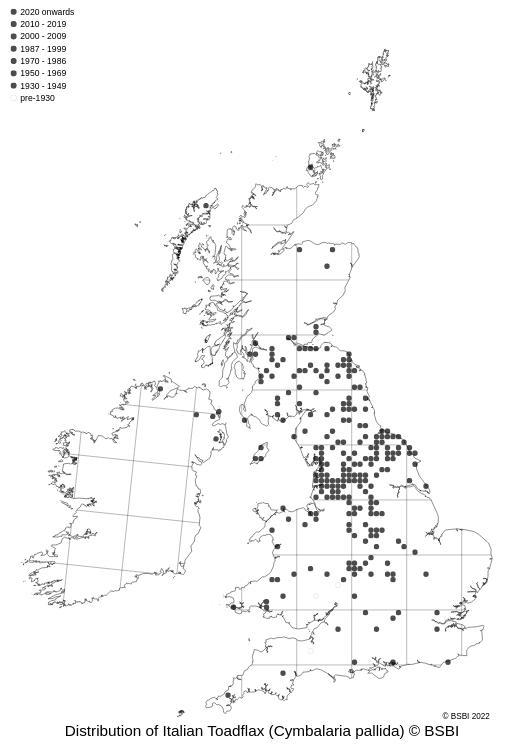Entry number #4 in our Plant of the Week series follows an unexpected find in my local cemetery.
In what is quickly becoming a trend in this little series, this week’s plant is not one native to the UK. No, much like our previous Forked Catchfly, this one has its roots in the Mediterranean and is found naturally in Italy. A far cry from a dreary urban cemetery in Newcastle…
Italian Toadflax, Cymbalaria pallida
Italian Toadflax (Cymbalaria pallida) is a small but striking member of the Figwort family, Scrophulariaceae. This delicate little flower was introduced into cultivation in Britain by 1882 and was known to be growing in the wild by 1924. The first report of a naturalised population comes from Bardsea, Westmorland prior to 1977.

The natural habitat of Italian Toadflax is rocky outcrops, shingles, scree and mountainsides. In the UK, it has readily adapted to inhabit man-made structures such as buildings, walls and other rocky places. At Jesmond Old Cemetery, where I encountered it, it was found growing in the cracked foundations of various old graves, as well as among the pavement.
In the North East, records of this plant are scarce but widespread. Here, it has been recorded in several towns and villages across Northumberland and County Durham, likely where it has escaped from cultivation. Only in one area does it appear common and widespread – Teesside where it has been recorded in several squares south of Middlesborough. Nationally, the picture is much the same with infrequent but widespread records and particular aggregations around urban centres.

What does it look like?
Italian Toadflax is superficially similar to the much more abundant Ivy-leaved Toadflax (Cymbalaria muralis), a species many of us encounter on a daily basis. The leaves of the two species are similar in shape being dark green and lobed, although those of Italian Toadflax are hairy. In contrast, those of Ivy-leave Toadflax are glossy and hairless.
The flowers of Italian Toadflax are fairly impressive and while they do resemble those of its common cousin, they are far larger and more prominent. Indeed, this is one of the first things noticed about the plant in the field. Look closer and you’ll see that these flowers are an attractive shade of violet with an extensive yellow patch on the flower lip.
It is worth noting that a white form of this species, Cymbalaria pallida ‘Alba’, also exists. As you would expect, the flowers of this cultivar are white as opposed to purple. This has only been recorded a handful of times as a garden escape.


